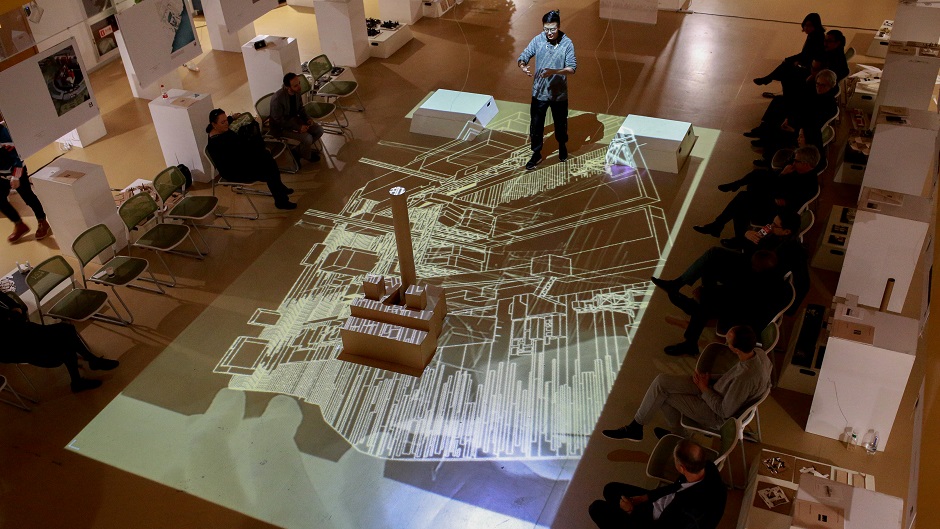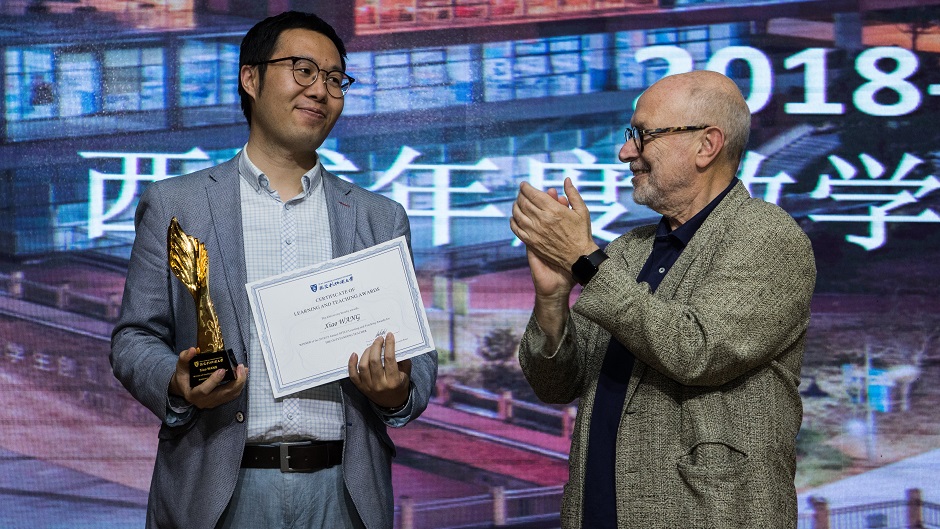08 Jul 2019

Some people get great ideas in the shower, others while on a walk or talking with friends. For Dr Juan Carlos Dall’Asta of Xi’an Jiaotong-Liverpool University, the idea for a new use of 3D mapping technology came when he was watching a Cirque du Soleil Avatar performance in Shanghai.
“The show was amazing. The scene was constantly changing, from water to fire, from day to night,” said Dr Dall’Asta, who is based in XJTLU’s Department of Architecture.
“I realised that was all done with projectors. Because I am familiar with 3D mapping technology, I knew they were using it to create these amazing effects.
“I thought, ‘Why can’t this be a design tool? Why can’t we apply it as an educational tool?’”
Back at XJTLU, Dr Dall’Asta worked with Dr Thomas Wortmann, David Vardy and Xiaohan Chen, the other teaching team members for his masters-level design studio module, to make the concept a reality.
They guided students to create ‘3D mapping digital performances’ for their end-of-year presentations instead of using the traditional method of boards or posters to explain their projects.
“Normally 3D mapping technology is used for shows, such as creating the appearance of a façade on a building with projected images,” Dr Dall’Asta said.
“The technology is used to map the shapes of physical objects so that projected images fit onto and around them.
“When video is displayed over these objects, visual illusions, like changing surroundings, are created. There is a sort of interaction between the physical and digital.
“While 3D mapping has been used in architecture and architecture education for enhancing the display of models, my idea was to take this a step further, to put the students inside the projected video.”

Ran Zhang, one of the students in the module, said that he appreciated how the format allowed adding artistic and human elements.
“This method combines fine arts, architecture and new technology,” he said.
“You can walk ‘into’ your own plan and show how the site grew from it. It’s far more than just a physical expression – it allows you to put some emotion into it.”

Dr Dall’Asta said he found his idea useful not only in helping his students learn new software tools, but also in developing personal skills.
“Something magic happened – this method of presentation really motivated them to do their best,” he said.
“It pushed my students to be more confident and to be leaders, which will help them in their masters degree programme and in their careers in China and around the world.
“I also saw my students really helping each other. This will stand them in good stead because in the practice of architecture there is a lot of teamwork involved.”

In addition to serving as a presentation tool, the 3D mapping technology also aided students with visualising and designing their project sites, Dr Dall’Asta said.
“Use of this dynamic tool allowed the students to see things in a way they couldn’t otherwise,” he noted.
“In the future, it will allow them and their clients to better conceptualize how things change over time, such as environmental changes and project area sizes.
“This is very important for future architecture because of the speed of how things are changing, especially in China.”

The idea of using the technology has taken off in the Department of Architecture. Dr Dall’Asta said other modules are already experimenting with digital presentations, and the projector has been installed permanently.
Dr Dall’Asta’s innovative use of 3D mapping technology in teaching recently earned him XLTJU’s Award for Most Innovative Teaching Practice at the University’s 2018-2019 Learning and Teaching Awards.
By Tamara Kaup; photos by Guo Lin and design studio module students
08 Jul 2019
RELATED NEWS

XJTLU educators recognised for excellent work
This month, nine outstanding Xi’an Jiaotong-Liverpool University teachers were recognised at the University’s 2018-2019 Learning and Teaching Awards. Dr Xiao...
Learn more




